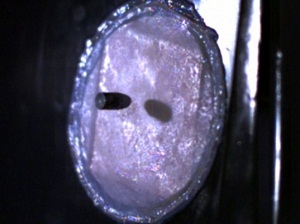I heard this news before about a spider goat that is capable of producing milk that same genetic material as the spider web. Though, the web is not that strong compared to that of a true spider. The silk that can be produce from the milk of a goat can still produce a strong silk.
The scientist had produced the spider goat by injecting the genes of the spider to a goat. The mother of the spider is still not a spider goat, but her decedents become the first bloodline of spider goats. The research first intention was to produce the silk in mass quantity so that it could be used for making bullet proof.
In a recent study that Professor Randy Lewis and his associates have conducted, they have hired the service of an artist so that they could test the silk on real bullets. The scientist used the silk to produce a skin like bulletproof that could be worn by soldier at combat. Bio-artist Jalila Essaidi had woven the silk so that it would resemble a real skin.
Both artist and scientist had the same desire. They want to find out if a skin made from the silk of spider oat would be enough to stop a bullet. For the test, the artist placed the skin silk on top of a gelatin so that they could see how much pressure that the bullet exerts.
 The result shows that the bullet did not penetrate the bullet; however, the bullet had reached two inches into the gelatin. The result only means one thing – having a bulletproof skin is not enough to survive in a real shooting combat.
The result shows that the bullet did not penetrate the bullet; however, the bullet had reached two inches into the gelatin. The result only means one thing – having a bulletproof skin is not enough to survive in a real shooting combat.
However, the test also proves that the skin made out of silk would have a use in the field of medical study. Doctors might be able to use the skin to cover a large area of exposed flesh. This technology could be used on treating those who got burned in a large fire.
Prof Lewis says that they do not need to create the silk for the production of bulletproof since bulletproof are already available in a gun store. Their research could have a better use for surgeons.
He added that the silk can be used to grow a better material than those of ligaments or tendons.
Currently, Prof Lewis trying to increased the number of spider goats by breeding them. He hopes that the new breeds will be ready for the next round of milking in January. At the moment, the scientist has around three dozen of the genetically-engineered goats.